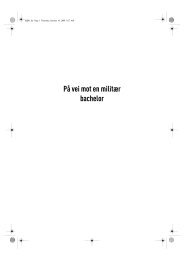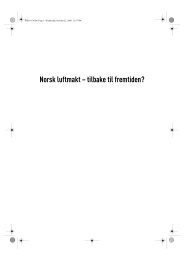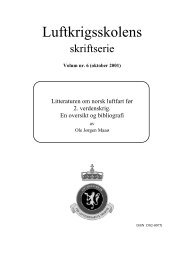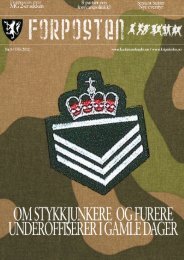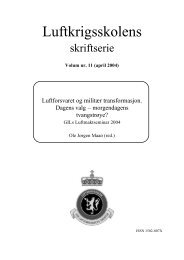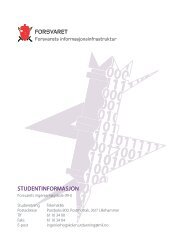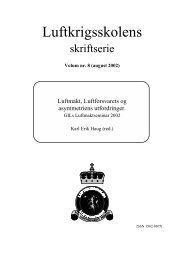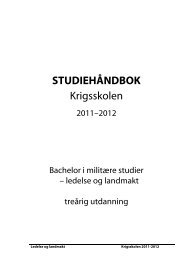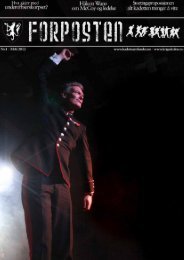Wilhelm Mohr
Wilhelm Mohr
Wilhelm Mohr
You also want an ePaper? Increase the reach of your titles
YUMPU automatically turns print PDFs into web optimized ePapers that Google loves.
PART I – The Contribution of the Norwegian Air Forces<br />
Fighter Command.<br />
Many Norwegian pilots and navigators served at various periods in different<br />
RAF Fighter Squadrons. Three of these were given the function<br />
of Wing leaders («Wingco/flying»). Four became Squadron Commanders<br />
and two Flight Commanders. In total Norwegians in British<br />
squadrons of Fighter Command have been accredited with 58 aircraft<br />
destroyed, 4 probably destroyed, 17 damaged plus a variety of ground<br />
targets engaged.<br />
In addition a number of Norwegian pilots in the course of service<br />
with RAF in Fighter Command held temporary positions in gunnery<br />
weapon training units and even duties in operational staff.<br />
Notably the RAF No. 604 and the 85 Mosquito night fighter squadrons<br />
had attracted many Norwegian aircrew members. These squadrons<br />
were at first part of the air defence force of Southern England.<br />
Prior to the invasion the squadrons were transferred to Bomber Command<br />
with the primary task of night intruder, to offer protection to the<br />
bomber stream and to attack selected targets in Germany or enemyheld<br />
territory. Altogether fifteen Norwegian aircrew members followed<br />
85 squadron. As a small intermezzo the squadron was brought back<br />
into Fighter Command; Norwegian aircrews accounted for eleven flying<br />
bombs.<br />
The «Stockholm Element».<br />
This contingent was a separate Norwegian war effort in an area of<br />
prime national interest. It is recorded in this report although, while<br />
assistance was rendered by operational control, it was not subordinated<br />
to any of the RAF Commands.<br />
Air transport was required between the UK and Sweden because of<br />
the great number of refugees. By January 1941 2,851 such refugees were<br />
registered. After Germany attacked Russia, this avenue of escape was<br />
no longer available. At the same time the demands on the Norwegian<br />
forces in the UK were ever increasing.<br />
After some endeavours to establish a separate arrangement, an agreement<br />
was reached by which BOAC allowed two Norwegian aircraft and<br />
69



